Yuan-te Wang’s work with high-temperature porcelain combines a well-designed color palette with a unique sense of shape. It incorporates materials, technology, and art to a high degree and reflects the coexistence between humans and nature, all of which elevates his art to a new level.

This piece, Awakening Emotional, was recently awarded first prize by the 2020/21 FRANZ Rising Star Project. This award was selected by 14 international judges from the United Kingdom, France, Germany, Italy, Spain, Northern Ireland, South Korea, Mainland China, and Taiwan. His works stood out among applicants from 29 countries and regions who submitted a total of 691 applications. According to Yuan-te, the concept of his winning piece is as follows:
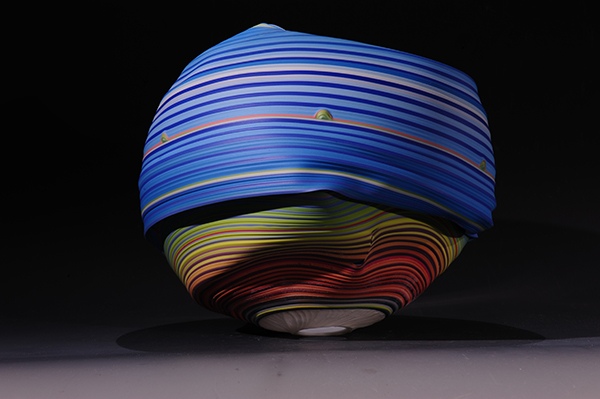
“In an Eastern sense, we respect the changes of nature and obey the laws of nature. People seek ways to live balanced and coexist with natural power for many thousand years. In my ceramic creations, it is not absolute control, but the pursuit of a subtle balance between controllable and not.”
The above award-winning work and narrative demonstrate an artist with extraordinary skills and a deep understanding of nature. His artistic development is the result of more than 20 years of experience including his refinement of technique, experience in the gift exporting industry, and the appreciation of beauty from European and American influences, as well as his recent study of Chinese medicine.
In high school, Yuan-te Wang, majoring in sculpture and ceramics, wanted to embark on the path of pure art. However, he was worried that if he spent all day in art creation with limited art knowledge and technique coupled with the lack of life experience, his art creation might become a mere formality, or it may be reduced to a sentimental expression without substance.
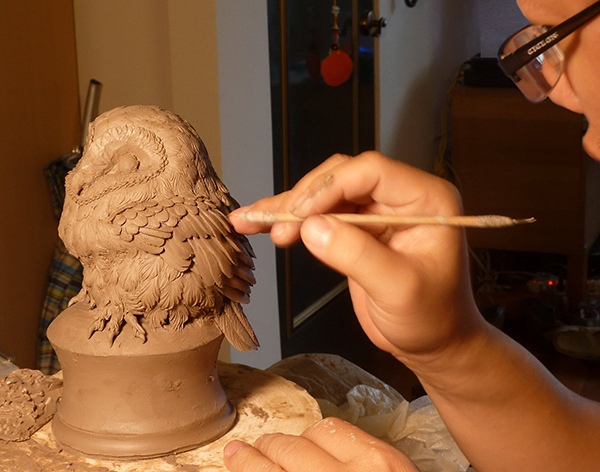
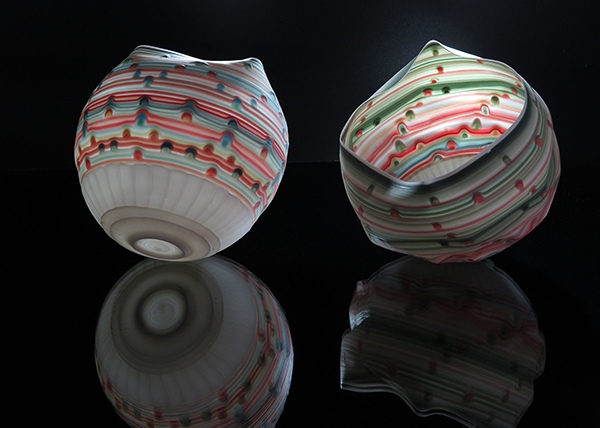
Realizing the necessity of adjustment, after graduation, Yuan-te decided to delay his goal of being a pure artist. First he started working on prototype sculptures and set up a personal studio for a few years. Then he entered factories and trading companies as a product designer. Lastly, switched to the gift import-export business.
Over the past 17 years of work, Yuan-te’s vision has been broadened because of his exposure to European, American, and Asian gift shows. In the last seven years, while in the trading business, Yuan-te searched for suitable factories and foreign trade companies in more than ten provinces in mainland China, and cooperated in product development and export. As a result, he came into contact with people, places and things of all kinds.
In the early stages, Yuan-te cultivated his professional aesthetic ability from sculpture and product design. When he switched to the trade business he had no prior knowledge so he took classes from Taiwan’s National Open University and read professional books to learn tariff and trade-related knowledge and logistics. During this period, he felt the pressure of learning from the perspective of a layman but he gradually adapted. The process was hard, but worthwhile.
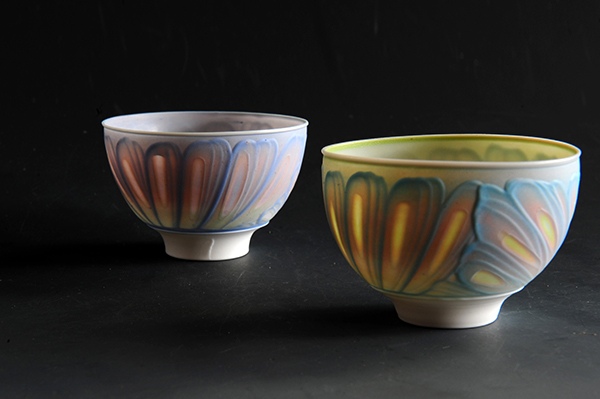
Another episode after leaving the trade job: Yuan-te was invited by the Dehua Factory in China to assist them for a year in developing their domestic market. This was undoubtedly another challenge that was not available in the past. Yuan-te sought help from a friend known for his deep background in oriental art. His labor ranged from product design and management to setting up a brand store in Xiamen, China. In the end the hard work paid off — it attracted a state-owned enterprise which invested in them and merged into another brand. At this time, Yuan-te began thinking about gradually withdrawing from the business.
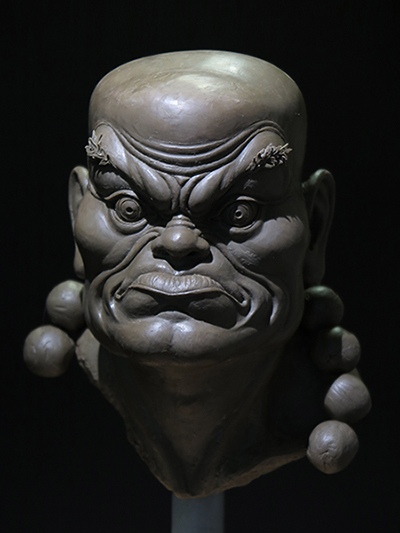
After leaving the lifestyle business world, Yuan-te began to learn to live anew. He felt regretful for not being with his six-year-old daughter for so many years because of work so he took this chance to accompany her through her childhood.
While being a dad and based on the recommendation of friends, Yuan-te began to learn Chinese medicine, such as the Treatise on Febrile Diseases and Miscellaneous Diseases of the Eastern Han Dynasty, Huangdi Nei Jing, etc. Studying ancient Chinese medicine also became a way for him to learn about Eastern culture.
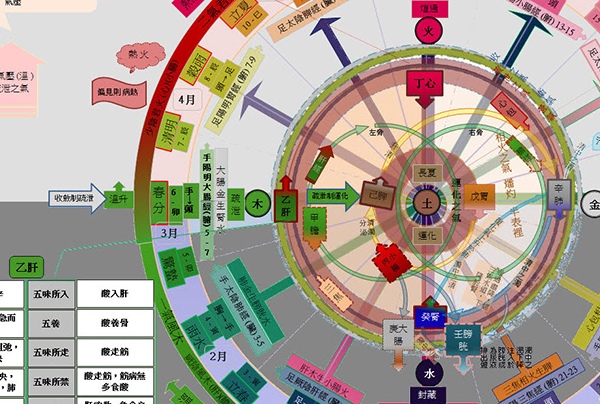
Later, he began to think about sculpting ceramics and so made a 180-degree change. From a background of original product design, which requires summarizing a large amount of information and analysis for customer needs and market dynamics, Yuan-te turned towards an inner exploration and creativity that embodies totally different values.
In the beginning of his creative exploration, due to his previous insights while working in the export business, Yuan-te understood that traditional Taiwanese manufacturers cannot have a competitive advantage due to Taiwan’s limited natural resources. This prompted him to make the most of materials that he did have available under such limited conditions.
Yuan-te deliberately chose white porcelain to challenge himself. On the one hand, Yuan-te would think about how best to elevate the common and affordable white porcelain ware to the level of a spiritual aesthetic experience through the interpretation of different aesthetic craftsmanship. On the other hand, Yuan-te hoped to gradually remove the burden of traditional, past design experience.

In order to avoid generating too much waste during the creation of ceramics and also reduce its environmental burden (such as gypsum molds which must be discarded after a number of re-moldings), Yuan-te tried to use “light-waste mass” or materials that can be used repeatedly as molding tools (such as balloons, paper, silicone, etc.).
Yuan-te preferred to use balloons as his main model. But wet soil shrinks when the moisture evaporates and the thickness of the soil embryo applied to the balloon is as thin as an eggshell, so when the soil embryo gradually dries and shrinks, it easily cracks; sometimes it takes only a few minutes and the whole piece is destroyed. Whether it is adobe or kiln firing, the defect rate is very high.
Nevertheless, gradually, he was successful and his creations began to appear in ceramic exhibitions in various countries, such as the 2016 Ceramic Biennale held in the Yingge Ceramics Museum in Taiwan, a ceramic exhibition held in Spain, and the most recent 2020/21 FRANZ Rising Star Project Award.
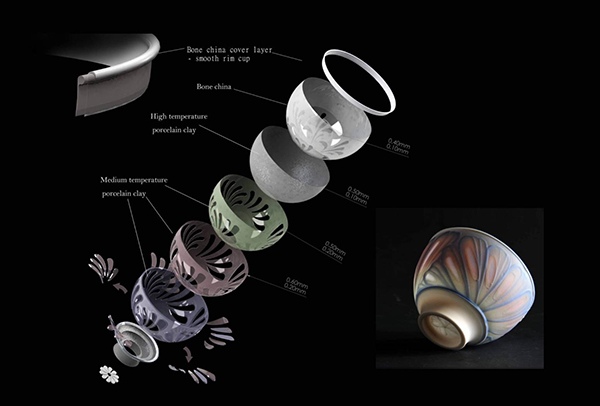
In addition, he also devoted himself to using thin porcelain to make small utensils such as tea cups, wine glasses, and other products. He employs a highly technical process to make his cups, hoping that from monotonous materials (especially white porcelain) to show a sense of layers: smooth layer, structural layer, relief layer, etc. He will do three to four-layer films, each layer having a thickness of between 0.1 to 0.4mm. When all the films are put together, the whole cup looks crystal clear and beautiful with a great sense of texture and feel. According to Yuan-te, he is the only one in Asia who employs this technology. To his surprise, his porcelain utensils have been well received in the Taiwan market, although he has only joined the market in recent years.
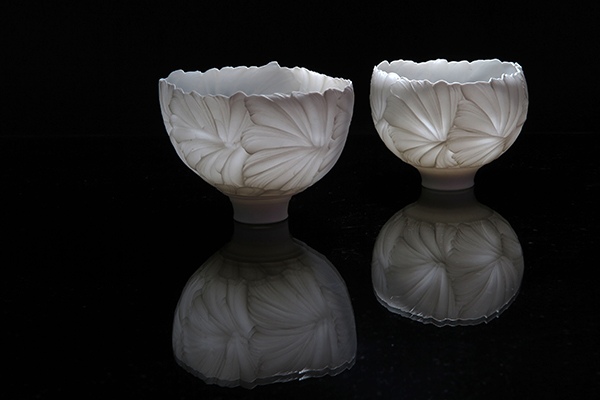
From the study of Chinese medicine Yuan-te also began to deeply understand Chinese culture and applied his learning to ceramics. For example, he believes in the concept of yin and yang: invisible energy is yang and tangible matter is yin, and the relationship between the two interacts. “Yang” is “energy that can change matter” and “yin” is “material that can store energy.” It can be seen as the way to understand and observe nature, the balance between various physical phenomena.
Using Eastern cultural elements in his art creations, Yuan-te tries to avoid imitation of the surface of the form and the use of obsolete and ossified techniques. Therefore, he tries to represent the meaning of the thing rather than its form; this orientation embodies Eastern wisdom that is generally unfamiliar in modern times. His wisdom is shown in his works.
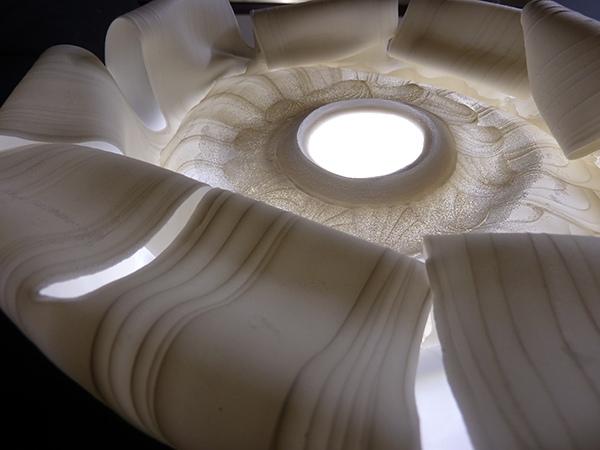
Yuan-te’s White Porcelain Series mainly utilizes glaze recipes and techniques which are blended into differing firing temperatures, the texture of clays and attached slurry (SLIP) applied to the surface of the balloon. The surface of the clay is then painted with a clay knife to create various depths of relief lines. At the same time, the “texture” and “touch” of different white colors are mixed and matched in the performance of the work.
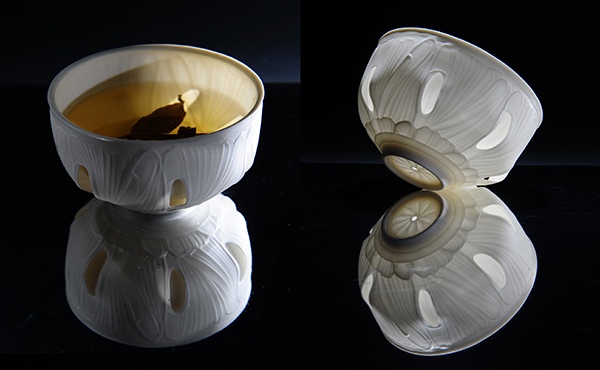
His Colorful Pattern Series is based on the use of high-temperature ceramic pigments that are chosen based on the ups and downs of his heart and emotions, and blended into various colors of porcelain clay, stacked in a pile of circles. There are non-repeating, subtle changes in the brightness of each layer combined with the light transmission effect of thin porcelain, and the neat texture of layers, with various angles of light, brings rich and interwoven levels of beauty. Through the use of color contrast, gradient, softness, and intensity, different visual moods are overlapped.
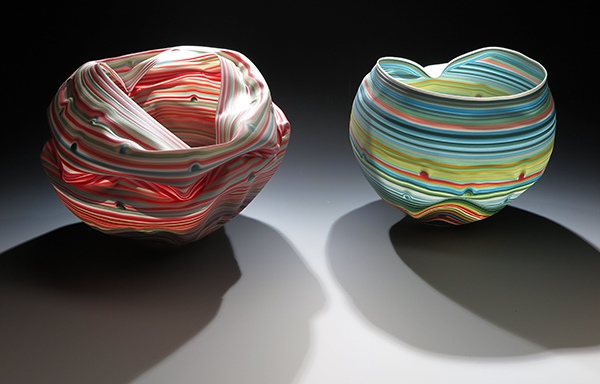
Works on modeling: Adobe, after molding, when the conditions are given a certain thickness, Yuan-te lets the temperature of the kiln fire (positive energy) and the structure of the clay (the yin of the material) to interact organically. Therefore, the firing of each piece becomes unpredictable, yielding unexpected results.
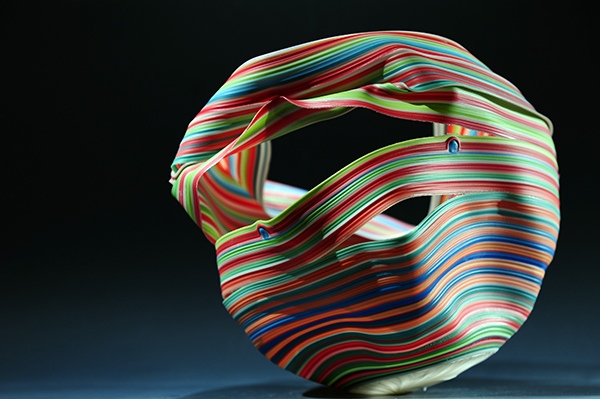
However, Yuan-te pays more attention to how to immerse himself in each new attempt and new exploration in creation so that the creative process itself is already a “beautiful growth experience”. Through the process of making the piece he is able to gain insights and discoveries while feeling satisfaction, joy, a sense of accomplishment, and other forms of positive feedback and growth.
Yuan-te’s art works not only integrate the spirit of Chinese culture, but also interpret the physical phenomena of nature and add breadth and depth to the artistic language of ceramics. We hope that he will create more wonderful works on the road to master level artistry.
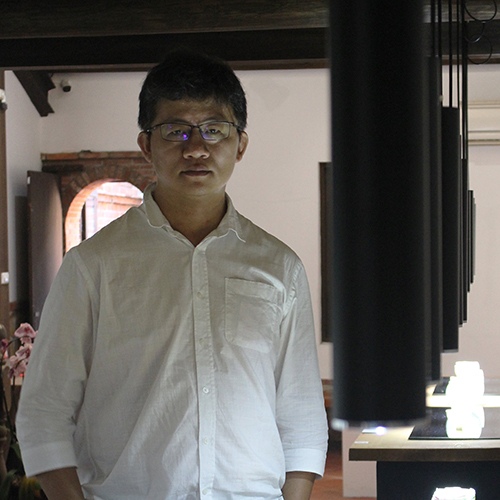
Yuan-te’s Instagram